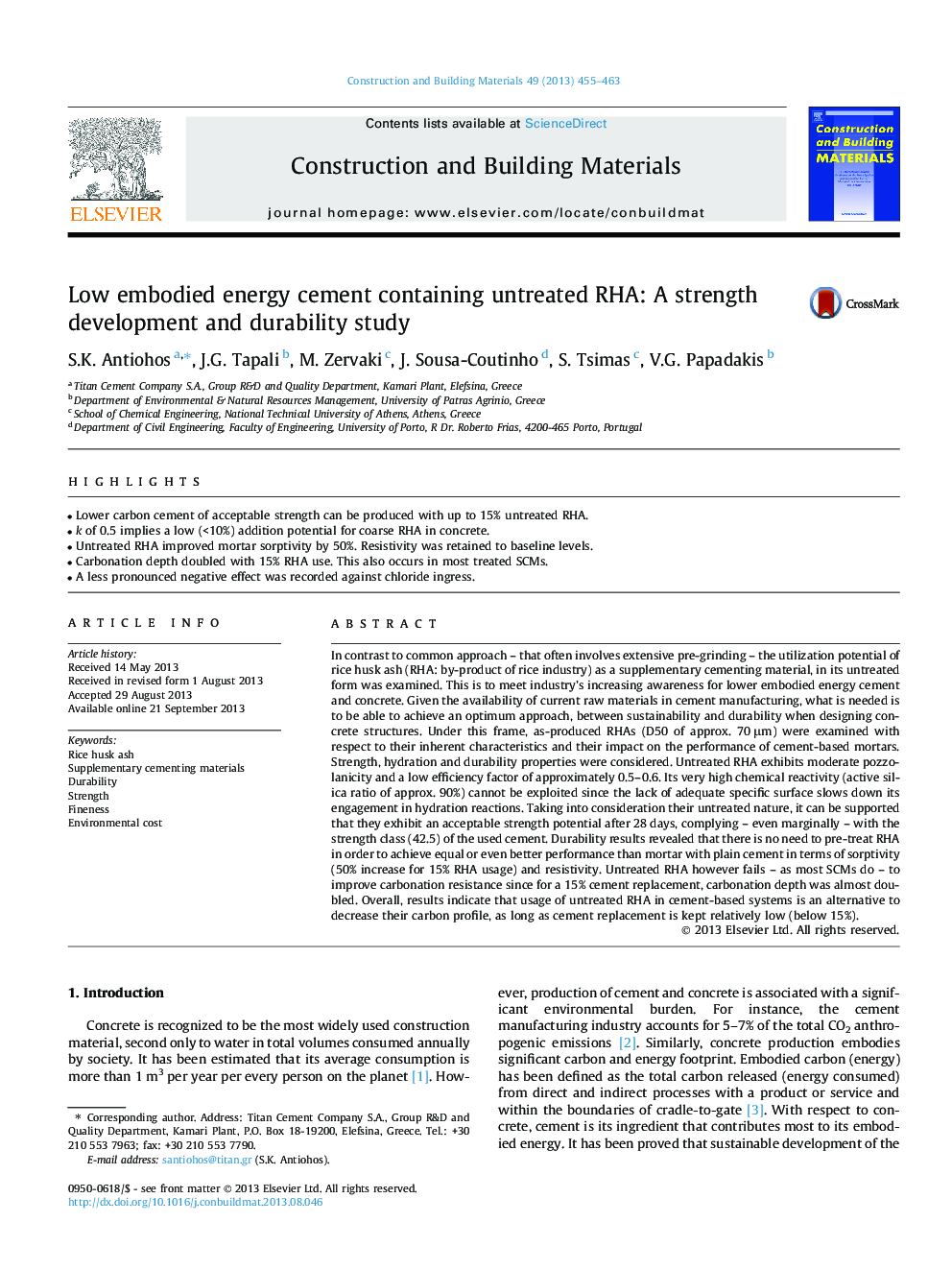| کد مقاله | کد نشریه | سال انتشار | مقاله انگلیسی | نسخه تمام متن |
|---|---|---|---|---|
| 6724864 | 503609 | 2013 | 9 صفحه PDF | دانلود رایگان |
عنوان انگلیسی مقاله ISI
Low embodied energy cement containing untreated RHA: A strength development and durability study
دانلود مقاله + سفارش ترجمه
دانلود مقاله ISI انگلیسی
رایگان برای ایرانیان
کلمات کلیدی
موضوعات مرتبط
مهندسی و علوم پایه
سایر رشته های مهندسی
مهندسی عمران و سازه
پیش نمایش صفحه اول مقاله

چکیده انگلیسی
In contrast to common approach - that often involves extensive pre-grinding - the utilization potential of rice husk ash (RHA: by-product of rice industry) as a supplementary cementing material, in its untreated form was examined. This is to meet industry's increasing awareness for lower embodied energy cement and concrete. Given the availability of current raw materials in cement manufacturing, what is needed is to be able to achieve an optimum approach, between sustainability and durability when designing concrete structures. Under this frame, as-produced RHAs (D50 of approx. 70 μm) were examined with respect to their inherent characteristics and their impact on the performance of cement-based mortars. Strength, hydration and durability properties were considered. Untreated RHA exhibits moderate pozzolanicity and a low efficiency factor of approximately 0.5-0.6. Its very high chemical reactivity (active silica ratio of approx. 90%) cannot be exploited since the lack of adequate specific surface slows down its engagement in hydration reactions. Taking into consideration their untreated nature, it can be supported that they exhibit an acceptable strength potential after 28 days, complying - even marginally - with the strength class (42.5) of the used cement. Durability results revealed that there is no need to pre-treat RHA in order to achieve equal or even better performance than mortar with plain cement in terms of sorptivity (50% increase for 15% RHA usage) and resistivity. Untreated RHA however fails - as most SCMs do - to improve carbonation resistance since for a 15% cement replacement, carbonation depth was almost doubled. Overall, results indicate that usage of untreated RHA in cement-based systems is an alternative to decrease their carbon profile, as long as cement replacement is kept relatively low (below 15%).
ناشر
Database: Elsevier - ScienceDirect (ساینس دایرکت)
Journal: Construction and Building Materials - Volume 49, December 2013, Pages 455-463
Journal: Construction and Building Materials - Volume 49, December 2013, Pages 455-463
نویسندگان
S.K. Antiohos, J.G. Tapali, M. Zervaki, J. Sousa-Coutinho, S. Tsimas, V.G. Papadakis,